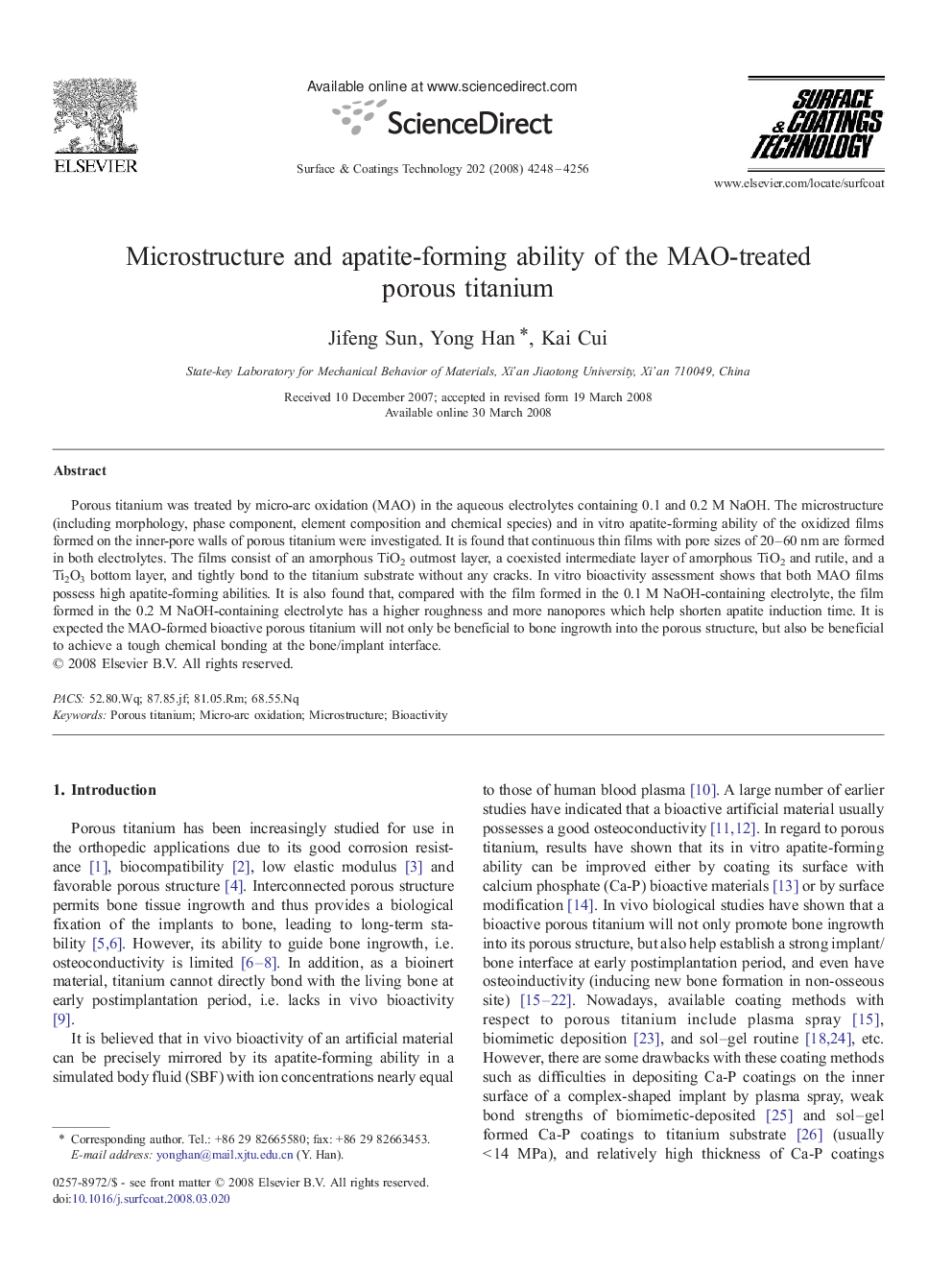| Article ID | Journal | Published Year | Pages | File Type |
|---|---|---|---|---|
| 1661239 | Surface and Coatings Technology | 2008 | 9 Pages |
Porous titanium was treated by micro-arc oxidation (MAO) in the aqueous electrolytes containing 0.1 and 0.2 M NaOH. The microstructure (including morphology, phase component, element composition and chemical species) and in vitro apatite-forming ability of the oxidized films formed on the inner-pore walls of porous titanium were investigated. It is found that continuous thin films with pore sizes of 20–60 nm are formed in both electrolytes. The films consist of an amorphous TiO2 outmost layer, a coexisted intermediate layer of amorphous TiO2 and rutile, and a Ti2O3 bottom layer, and tightly bond to the titanium substrate without any cracks. In vitro bioactivity assessment shows that both MAO films possess high apatite-forming abilities. It is also found that, compared with the film formed in the 0.1 M NaOH-containing electrolyte, the film formed in the 0.2 M NaOH-containing electrolyte has a higher roughness and more nanopores which help shorten apatite induction time. It is expected the MAO-formed bioactive porous titanium will not only be beneficial to bone ingrowth into the porous structure, but also be beneficial to achieve a tough chemical bonding at the bone/implant interface.
